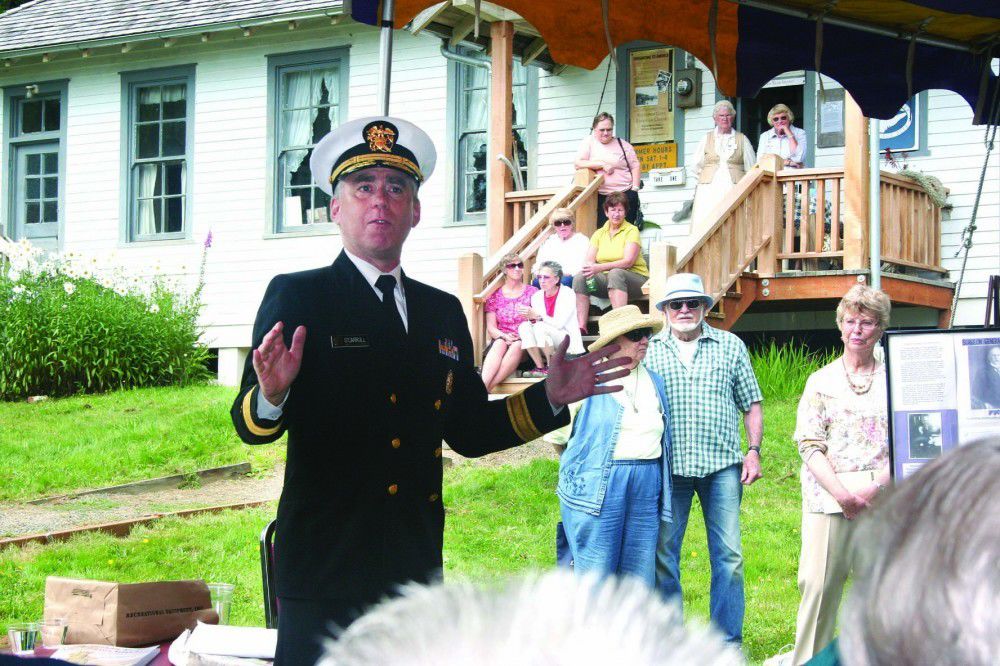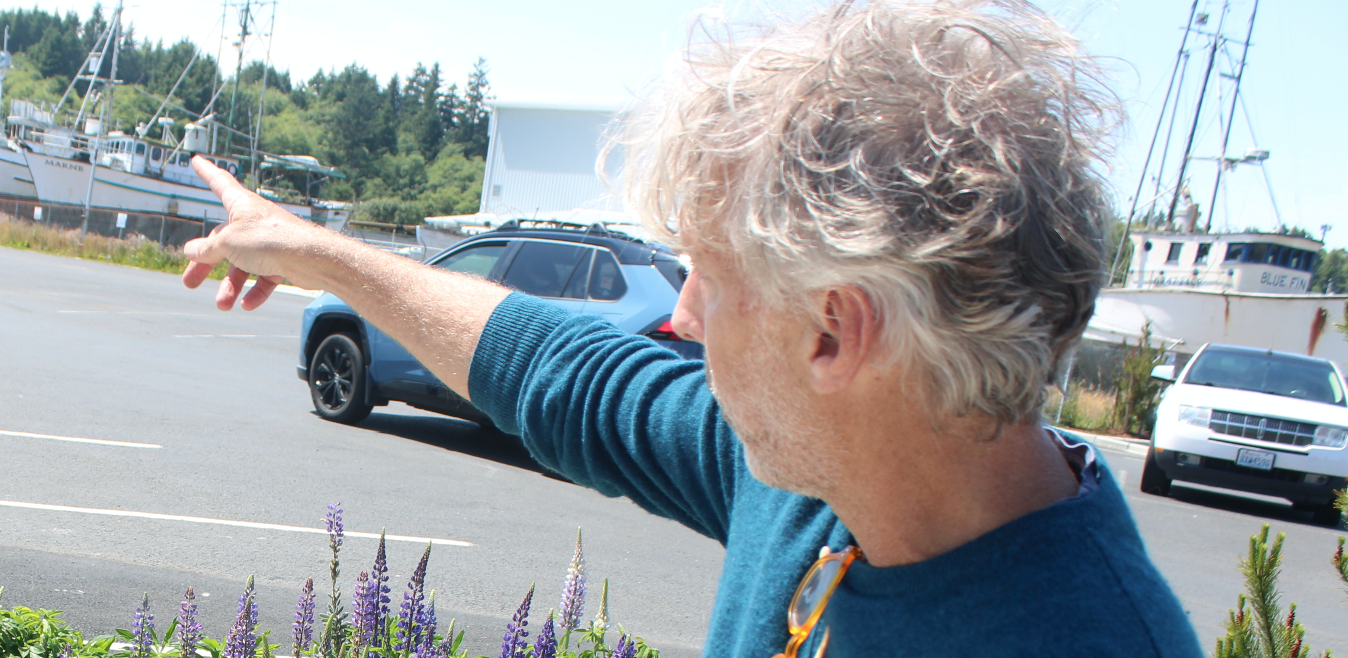Quarantine station’s mission still relevant
Published 5:00 pm Monday, July 23, 2012

- <p>Assistant U.S. Surgeon General Rear Adm. Patrick O'Carroll speaks to more than 100 people gathered at the Knappton Cove Heritage Center's 100-year anniversary Saturday. He said he would encourage his successors to visit the pesthouse in southwest Washington.</p>
KNAPPTON COVE The Pacific Northwests own Ellis Island celebrated its 100th anniversary Saturday.
The Columbia River Quarantine Station at Knappton Cove operated between 1899 and 1938, inspecting thousands of European and Asian immigrants.
The primary reason were celebrating the 100th anniversary now is even though the station was operating in 1899, the hospital building was built in 1912, said Nancy Bell Anderson, whose family has owned the property since the 1950s.
The hospital building, called a lazaretto, which means pesthouse, is a special quarantine hospital built specifically for people who had infectious diseases. With a capacity of 20 patients, the building has a main entrance that leads to two large wards and four isolation wards in each corner of the building, accessible by separate exterior entrances.
This is such a feather in our cap: This is the only one left on the West Coast, Anderson said.
The property was named a National Historic Site in 1980, and the hospital building houses a museum run by the nonprofit Knappton Cove Heritage Center.
The year 1912 was also when the U.S. Marine Hospital Service was renamed to todays U.S. Public Health Service.
More than 100 people attended the 100th birthday celebration Saturday. Public Health Service Assistant Surgeon General Rear Adm. Patrick OCarroll gave the keynote address. Capt. William Stenberg, a PHS officer and dentist assigned to the Coast Guard Sector Columbia River made follow-up comments.
OCarroll centered his address on a quote from 18th-century Irish political theorist Edmund Burke: Those who dont know history are destined to repeat it. He emphasized the importance of remembering quarantine.
Disease prevention was imprecise in the 18th and 19th centuries, and epidemics from communicable diseases like cholera, small pox, yellow fever and bubonic plague could only be controlled by quarantine.
Diseases are spread person to person, and can be interrupted by just separating people, OCarroll said. Quarantine isnt about the protection of one its about the protection of many. And thats what public health seeks to do.
The discovery and production of antibiotics and vaccines in the mid-20th century eradicated many infectious diseases. But OCarroll said quarantine will continue to be a tool for public health since diseases like SARS and anthrax exist.
Quarantine is something that wed better not forget how to do, OCarroll said. A museum like this that reminds us of our history is absolutely essential.
The history at Knappton Cove
The 1891 Immigration Act excluded all idiots, insane persons, paupers or persons likely to become a public charge, persons suffering from a loathsome or a dangerous contagious disease and criminals.
Ellis Island opened in 1892, and 50 other immigrant inspection and ship fumigation stations opened in the following years.
The ships holds in the 1800s were pretty dirty lots of rats, Anderson said.
The Oregon Senate passed a bill to establish a quarantine hospital and disinfecting station near Astoria in 1897. The government settled on Knappton Cove, an isolated strip of land across the river where an old salmon cannery, the Eureka and Epicure Packing Company, had operated. The Columbia River Quarantine Station opened in May 1899.
Immigrants arrived from Germany, Norway, Britain, France, Japan, Russia and Peru.
The quarantine station examined 6,120 people its first year of operation, Anderson said. I estimate it saw about 100,000 people total.
Before the station opened, infested vessels had to travel 275 miles north to Port Townsend. The new station sped up the process. An inspector in Astoria examined ships and those found to carry disease were sent to Knappton Cove. Ships moored at the cannery wharf, passengers disembarked for baths and the ship was fumigated. Fumigators burned sulphur in pots throughout the ship to kill all rats, fleas, lice and mosquitoes. Diseased people were sent to isolation in the lazaretto.
The quarantine station was effective in preventing epidemics in Astoria and the surrounding area, unlike San Francisco, which suffered from a bubonic plague epidemic from 1900 to 1909.
The quarantine station closed in 1938 because of decreases in immigration and advances in medicine.
The Bell family as caretakers
Andersons parents, Clarence and Katharine Bell, purchased the site from the government in 1950 and operated a summer fishing resort until the 1960s when State Highway 401 was built.
As my parents retired, I thought, I would just hate if this were to go to a developer, Anderson said. Im very much a promoter of historic places.
Anderson, who lives in Gearhart, created the Knappton Cove Heritage Center in 1995. The center is run by a board of volunteers that maintains the museum, which is open from 1 p.m. to 4 p.m., Saturdays in the summer. Andersons brother, Tom Bell, lives next door to the site.
In 2002 Anderson self-published the book The Columbia Rivers Ellis Island: The Story of Knappton Cove, which was recently revised and is now available on Amazon.com
She started compiling all these layers of history of the site, said Andersons daughter Heather Henry, who edited the book. It became a huge project.
The Bell family is committed to maintaining the property and keeping its history alive, which includes collecting historic artifacts.
Stuff surfaces daily. Mother Nature has provided us with two archeologists. And that would be the moles and the low tide, Anderson said. Its kind of a treasure hunt.
Portland State University archeology student Samantha Steerman has recently added her skills to the hunt. Volunteering at the museum since 2010, Steerman is creating an inventory of every item the museum owns, and she plans to focus her masters thesis on Knappton Cove and conduct several archeological digs.
Everything so far has just been found on the surface, so I think well find a lot, she said. There should be artifacts from people of every occupation: the Indians, the land claim, the cannery and the quarantine station.
It really is a microcosm of Pacific Northwest history and U.S. history, Anderson said.






